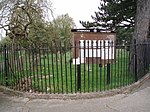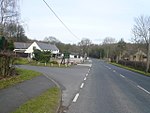Alfreton Hall
1725 establishments in Great BritainAlfretonBuildings and structures demolished in 1968Country houses in DerbyshireGrade II listed buildings in Derbyshire ... and 1 more
Houses completed in 1725

Alfreton Hall is a country house in Alfreton, Derbyshire. It was at the heart of local social and industrial history in the county. The history of the estate goes back to Norman times, but by the 17th century it was owned by the Morewood family, who were linked to local industry, mainly in coal mining. The original hall was on the site of Hall Farm to the east of the present building and was the seat of the Lord of the Manor. A new hall was built on the estate around 1724–25 by Rowland Morewood, with an additional wing added in 1855 by William Palmer-Morewood (architect Benjamin Wilson). This made the hall a very substantial property.
Excerpt from the Wikipedia article Alfreton Hall (License: CC BY-SA 3.0, Authors, Images).Alfreton Hall
Church Street, Amber Valley
Geographical coordinates (GPS) Address Nearby Places Show on map
Geographical coordinates (GPS)
| Latitude | Longitude |
|---|---|
| N 53.097777777778 ° | E -1.3919444444444 ° |
Address
Church Street
Church Street
DE55 7ZR Amber Valley
England, United Kingdom
Open on Google Maps











